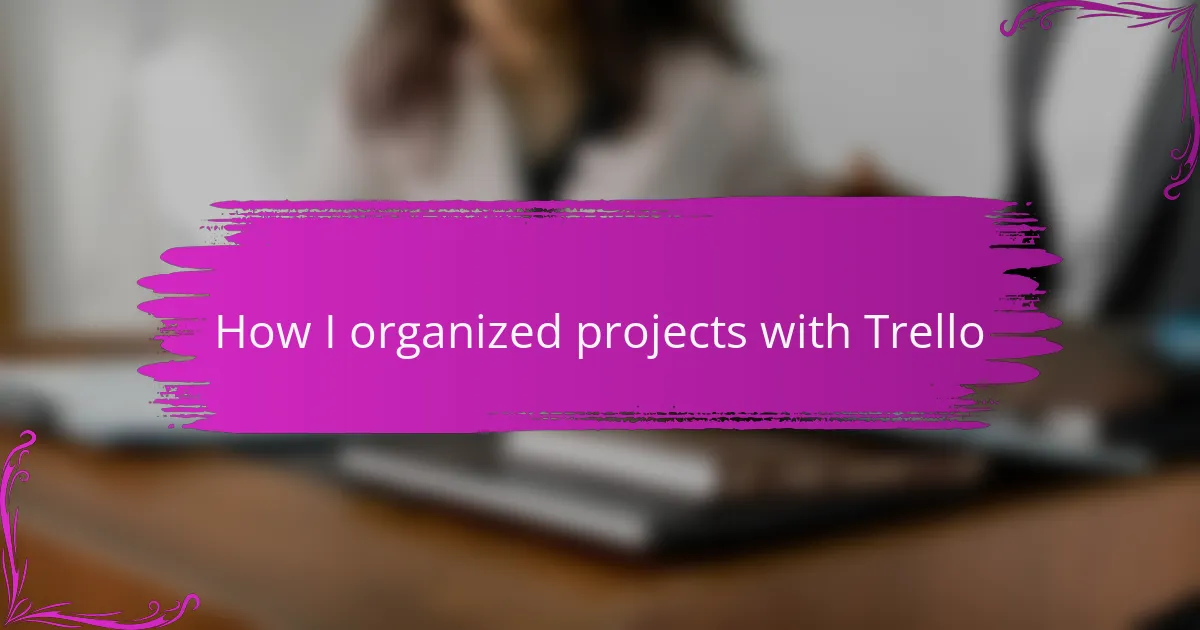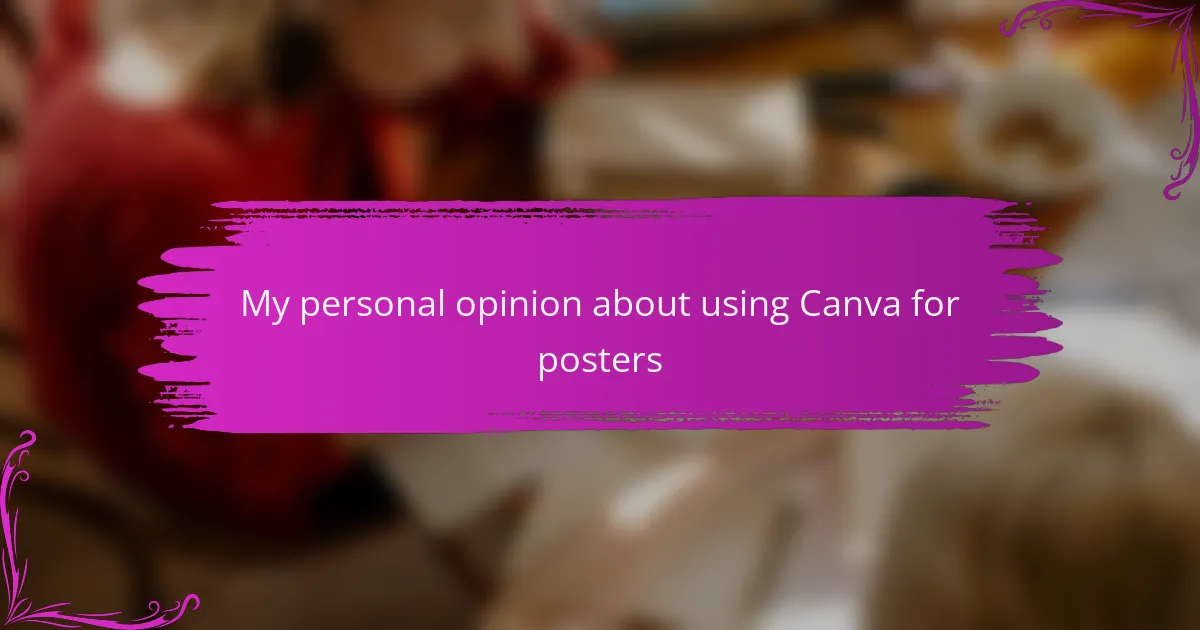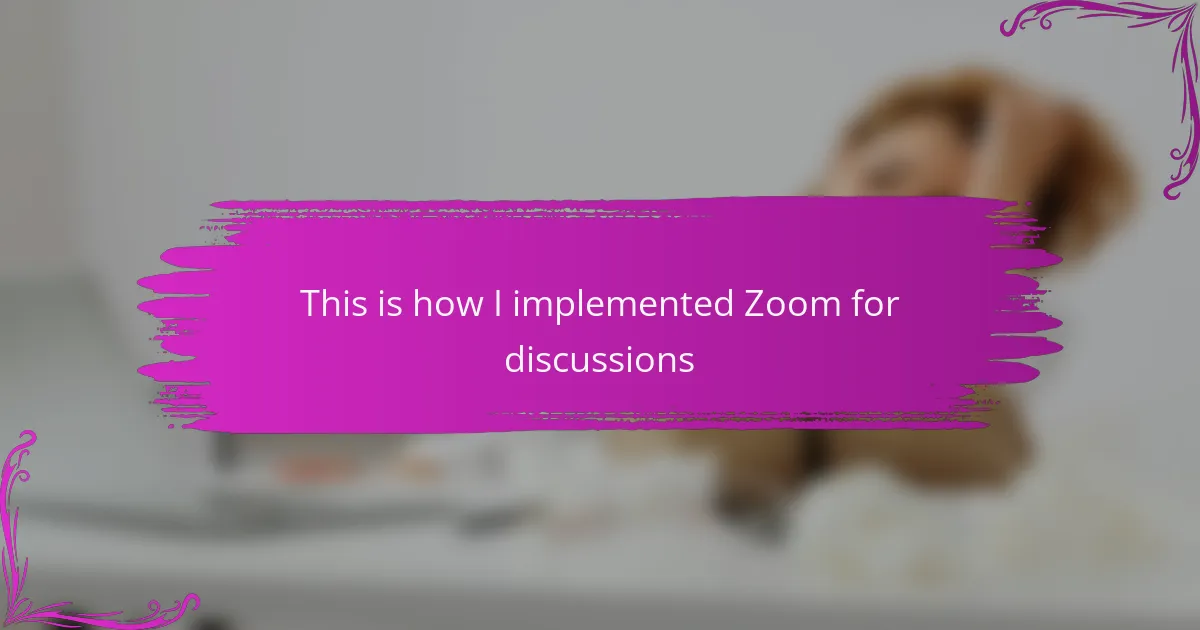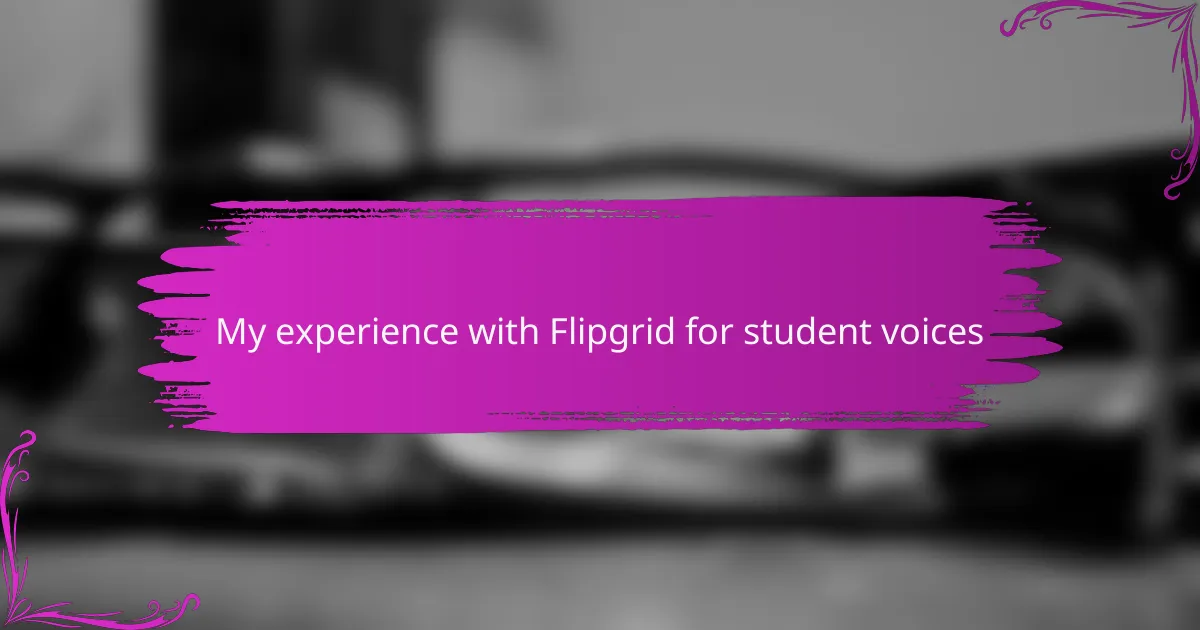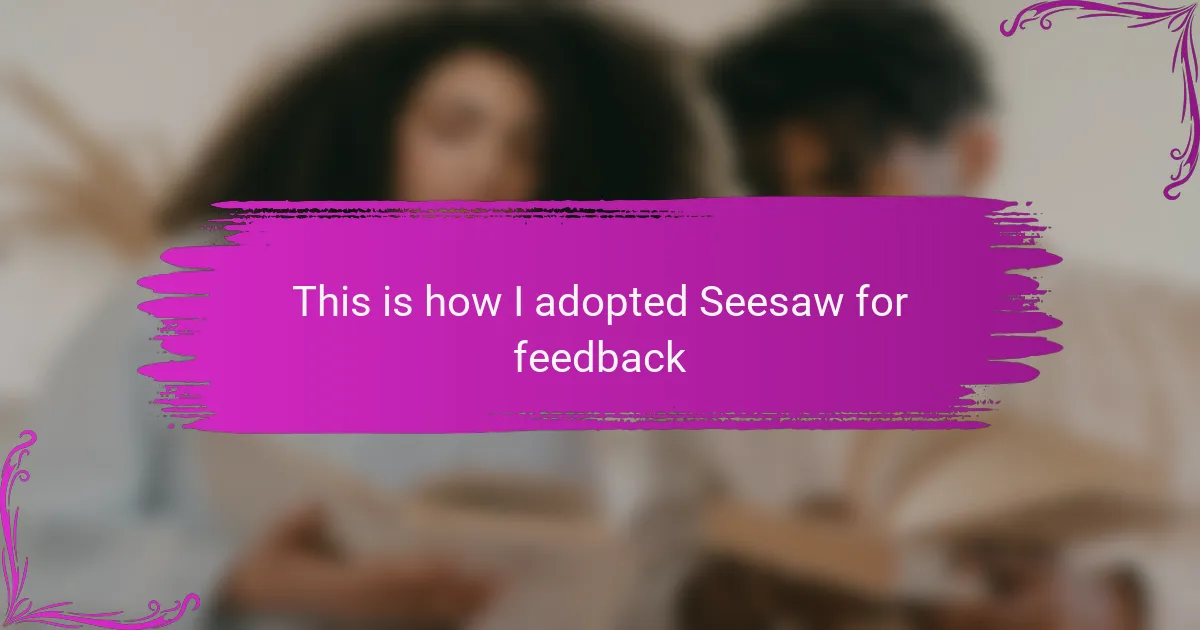Key takeaways
- Trello offers a visual project management system using boards, lists, and cards to enhance organization and workflow.
- Key benefits include visual organization, collaboration features, and customization options tailored to specific project needs.
- Effective setup involves creating main categories, labeling tasks, and incorporating checklists and due dates for better management.
- Strategies for managing deadlines include setting due dates, using color-coded labels, and daily reviews to stay on track.
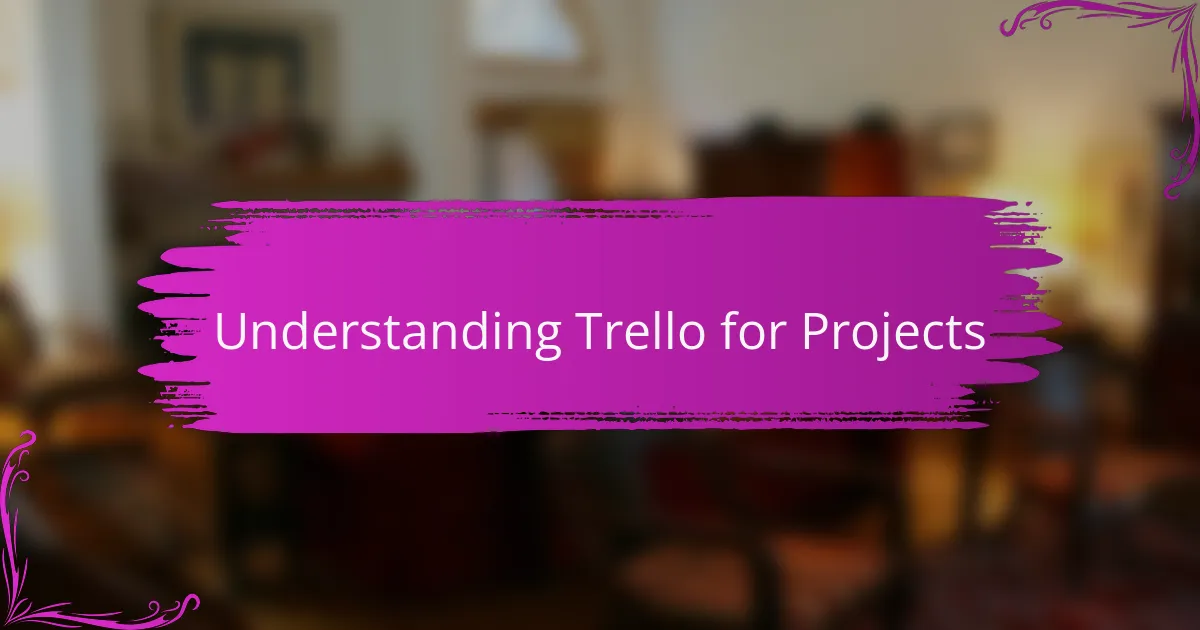
Understanding Trello for Projects
Trello is a visual tool that simplifies project management by using boards, lists, and cards. I remember the first time I started using Trello; the layout immediately clicked with me, and I felt a surge of organization I hadn’t experienced before. Have you ever felt overwhelmed with tasks? Trello helps break it down into manageable pieces.
Each project in Trello can be tailored to fit your needs, allowing you to easily track progress and collaborate with others. I’ve found that creating different boards for various subjects not only keeps my projects organized but also fosters creativity. What about you? Have you ever needed a system that’s both structured and flexible?
The beauty of Trello lies in its simplicity. I often catch myself rearranging cards based on priority, which gives me a sense of control over my workflow. It’s fascinating how a little bit of digital organization can lead to such clarity in my project management. How do you stay organized in your projects?
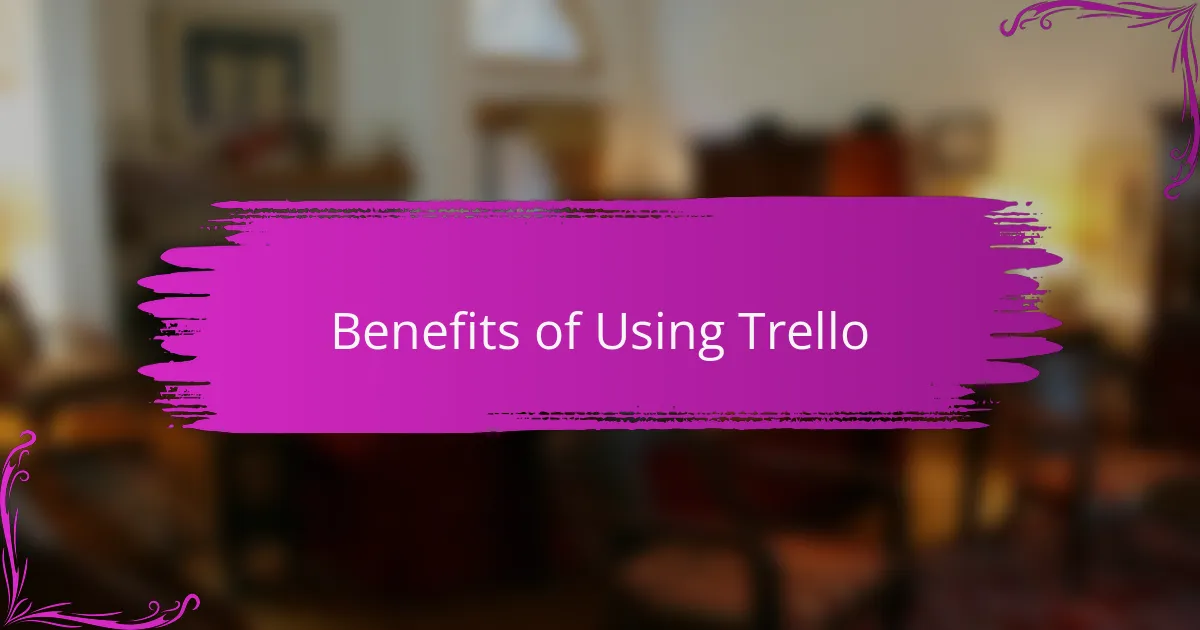
Benefits of Using Trello
When I first started using Trello, I was amazed by how intuitive it is. The visual layout not only makes it easy to see all tasks at a glance, but it also allows for quick updates. I appreciate how it enables collaboration; sharing boards with my peers and getting their feedback instantly transformed our project management.
Another highlight for me is the flexibility Trello offers. I can customize boards to fit the unique requirements of various projects, which has significantly improved my organizational skills. The ability to attach files, link to resources, and set deadlines in one place has been a game changer. I really feel like I have more control and visibility over my workload now.
Here’s a comparison table highlighting some benefits I’ve encountered when using Trello:
| Benefit | Description |
|---|---|
| Visual Organization | Trello’s card and board system provides a clear overview of tasks and projects. |
| Collaboration | Real-time updates and sharing features enhance teamwork and communication. |
| Customization | Each board can be tailored to specific project needs, which improves flexibility. |
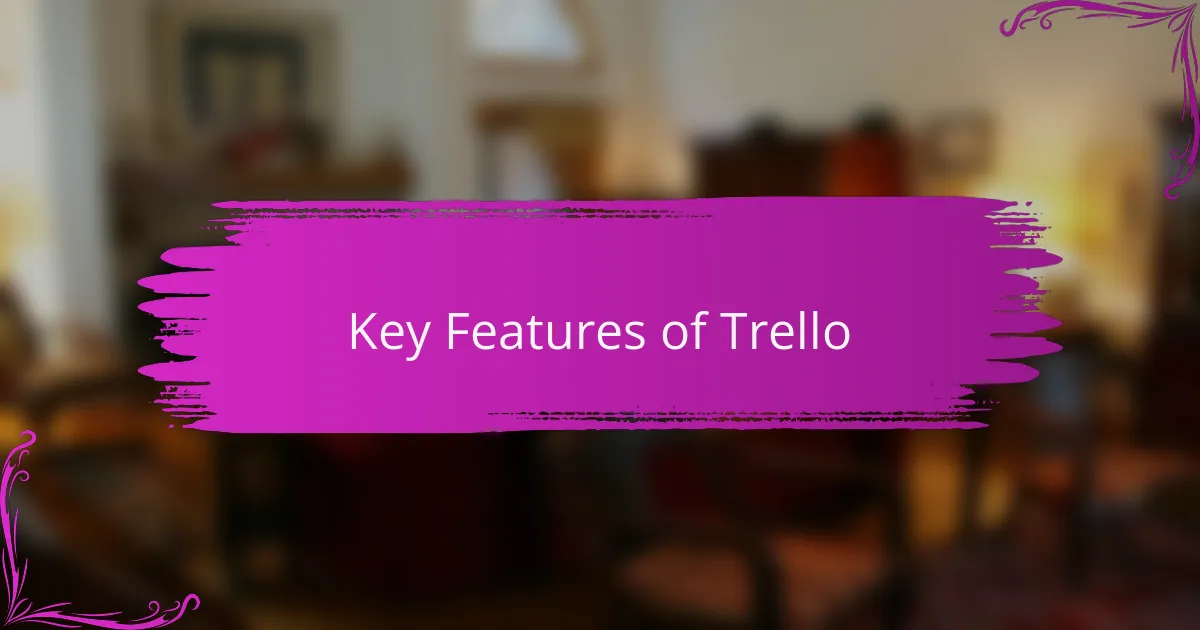
Key Features of Trello
When I first started using Trello to organize my projects, I was pleasantly surprised by its flexibility and visual appeal. The board and card system allows me to see the entire project at a glance, which has made managing my tasks feel less overwhelming. The ability to add labels, checklists, and due dates has become essential in helping me stay on track, and I often find myself rearranging cards to better reflect my priorities as they shift.
One of my favorite features is the integration capability. Connecting Trello with other tools I use, like Google Drive or Slack, makes it easy to keep everything in one place. Plus, the collaboration options allow my team to contribute in real time, fostering a sense of teamwork that feels both motivating and energizing.
Overall, the combination of visual organization and collaborative features has transformed my project management experience, making it more engaging and effective.
| Feature | Description |
|---|---|
| Visual Boards | Easy-to-navigate boards that show project progress at a glance. |
| Cards | Individual tasks can be created, moved, and customized with details. |
| Labels & Checklists | Helps categorize tasks and manage sub-tasks efficiently. |
| Due Dates | Keep track of deadlines and stay accountable. |
| Integrations | Connects with other tools to enhance productivity. |
| Collaboration | Team members can easily collaborate and update tasks. |
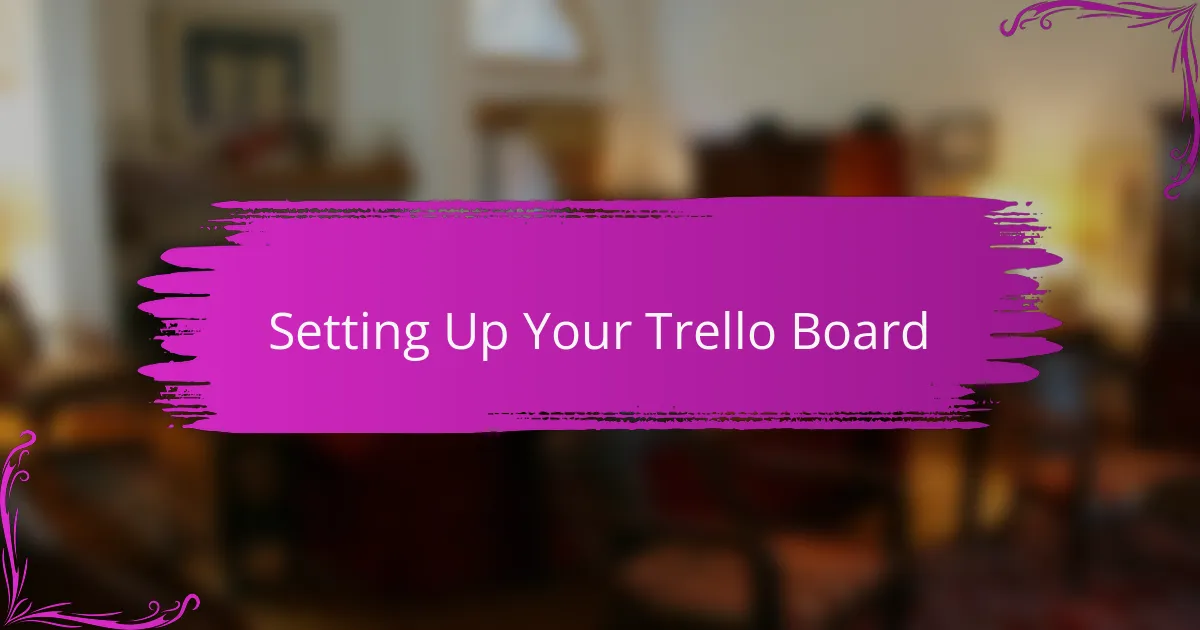
Setting Up Your Trello Board
Setting up your Trello board can feel like forming the backbone of any project you undertake. I remember when I first started organizing a literature curriculum; it was overwhelming at first. However, as I began to visualize my tasks on the board, it became clear how much easier it was to track progress and collaborate with others.
To create an effective Trello board, consider these essential steps:
- Identify the main categories or stages of your project (e.g., Planning, Research, Drafting, Editing).
- Create lists within those categories to break down each stage into manageable tasks.
- Use cards to represent individual tasks or resources, labeling them with due dates and priorities.
- Incorporate checklists within cards to track step-by-step progress.
- Use color-coded labels to quickly identify different themes or levels of importance.
- Invite collaborators and assign tasks directly on the board to enhance teamwork.
These steps transformed my project management experiences, making it a breeze to visualize and navigate through the complexities of literature education.
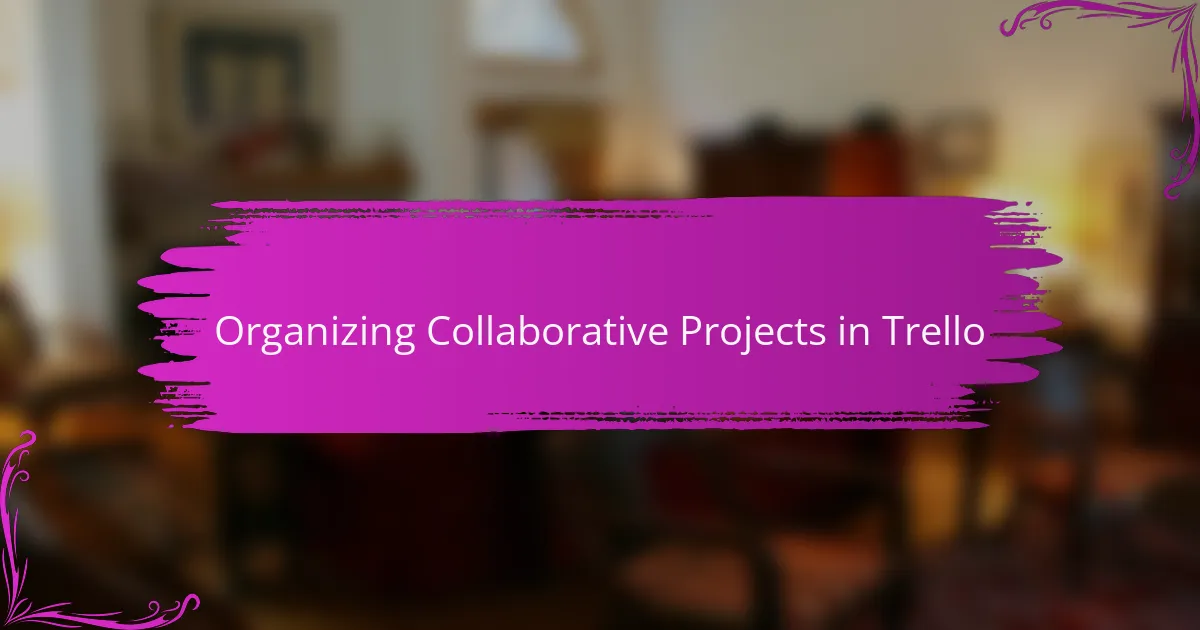
Organizing Collaborative Projects in Trello
When it comes to collaborative projects, Trello truly shines in its ability to streamline communication and task management. I remember working on a literature curriculum development project with a team of educators. Using Trello allowed us to create a shared board where we could list tasks, assign responsibilities, and track our progress in real time. It turned what could have been chaotic discussions over email into organized conversations with visible outcomes.
One feature that I found particularly helpful was the ability to attach relevant resources directly to tasks. For instance, when someone suggested a new book for the curriculum, we could quickly link to articles, reviews, and even lesson plan ideas right in the card. This made it super easy to keep everything centralized and accessible, which is crucial in collaborative settings.
- Create a dedicated board for each project with lists for tasks like “To Do,” “In Progress,” and “Done.”
- Utilize labels to categorize tasks by theme, subject, or priority.
- Assign team members to specific cards, promoting accountability and clear ownership.
- Include checklists within cards to break down larger tasks into manageable steps.
- Set deadlines on cards to maintain momentum and ensure timely completion.
- Use the comments section to facilitate discussions and share updates without leaving the board.
By making these strategies a habit, I found our collaborative efforts not only improved in efficiency but also fostered a sense of camaraderie among team members.
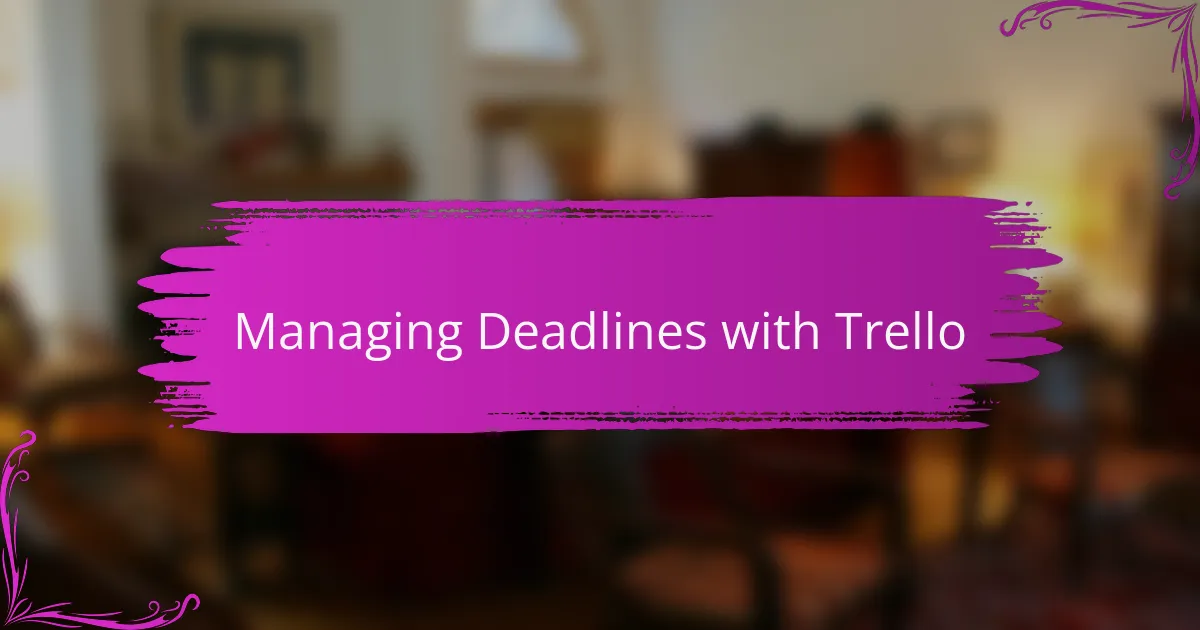
Managing Deadlines with Trello
When I first started using Trello for managing my projects, I quickly realized how invaluable it was in tracking deadlines. The visual layout of boards and cards helped me see everything at a glance, so I never missed an important deadline. I remember one stressful week leading up to a major project submission—having that visual reminder kept me focused and organized.
To make the most of managing deadlines with Trello, here are some strategies I found effective:
- Set Due Dates: Assign specific due dates on cards to establish clear timelines.
- Use Labels: Color-code labels for urgency. It’s an easy way to visualize what’s immediate.
- Create Checklists: Break tasks down into smaller steps right within the card to stay on track.
- Daily Reviews: Spend a few minutes each day reviewing what’s coming up to stay proactive.
- Reminders: Utilize Trello’s notification system to get reminders ahead of deadlines.
These methods not only kept me on schedule but also alleviated a lot of the pressure that can come with looming deadlines.
